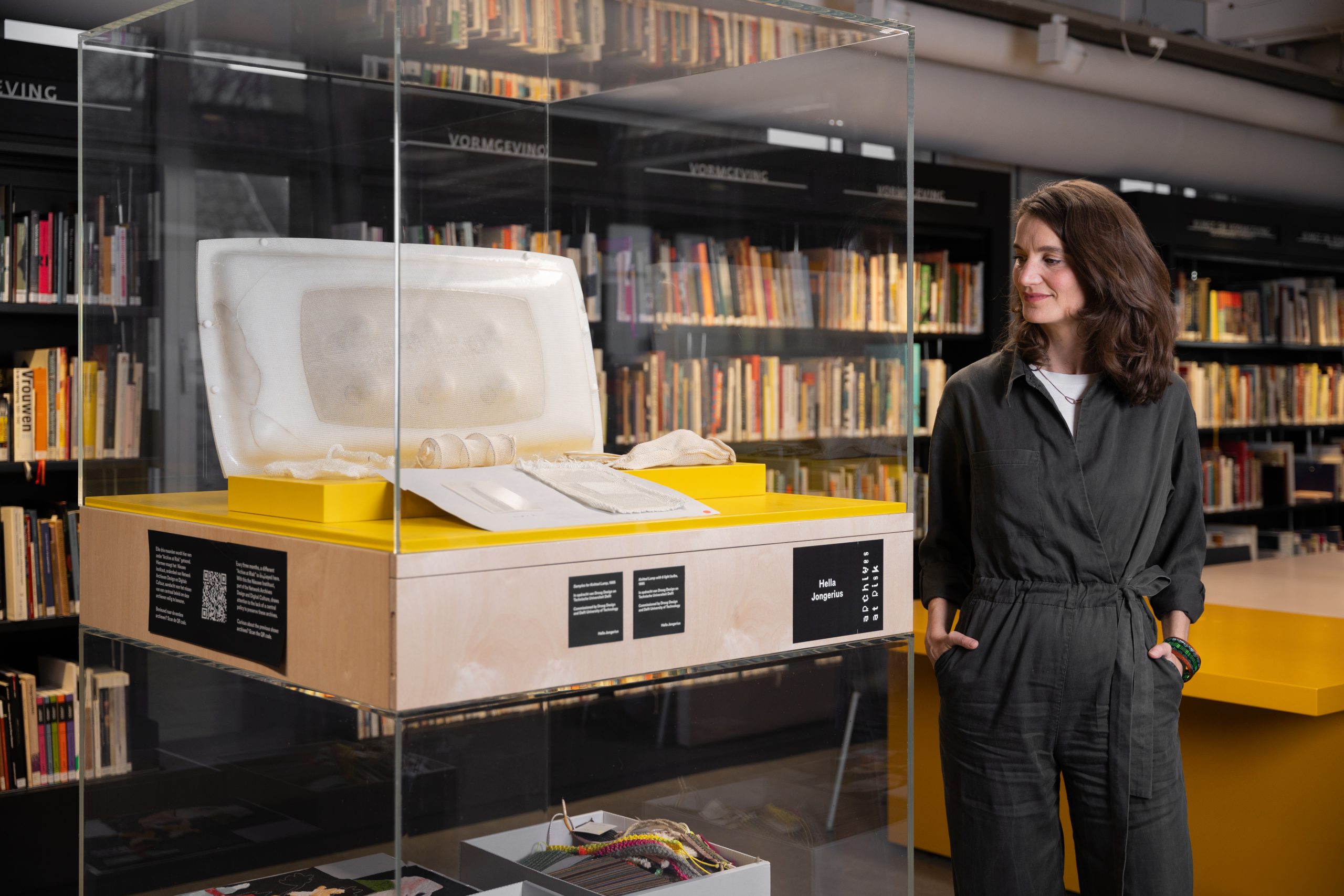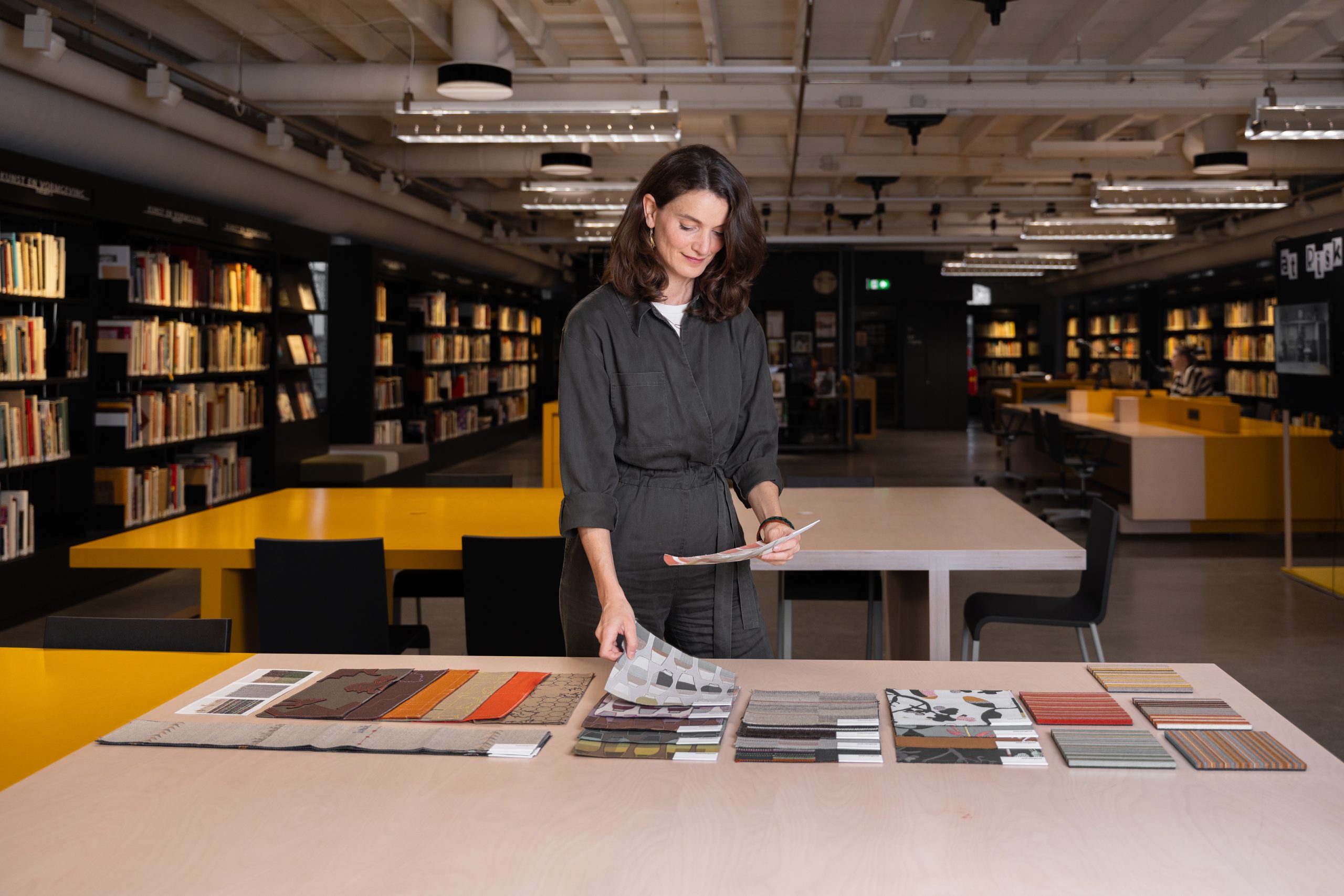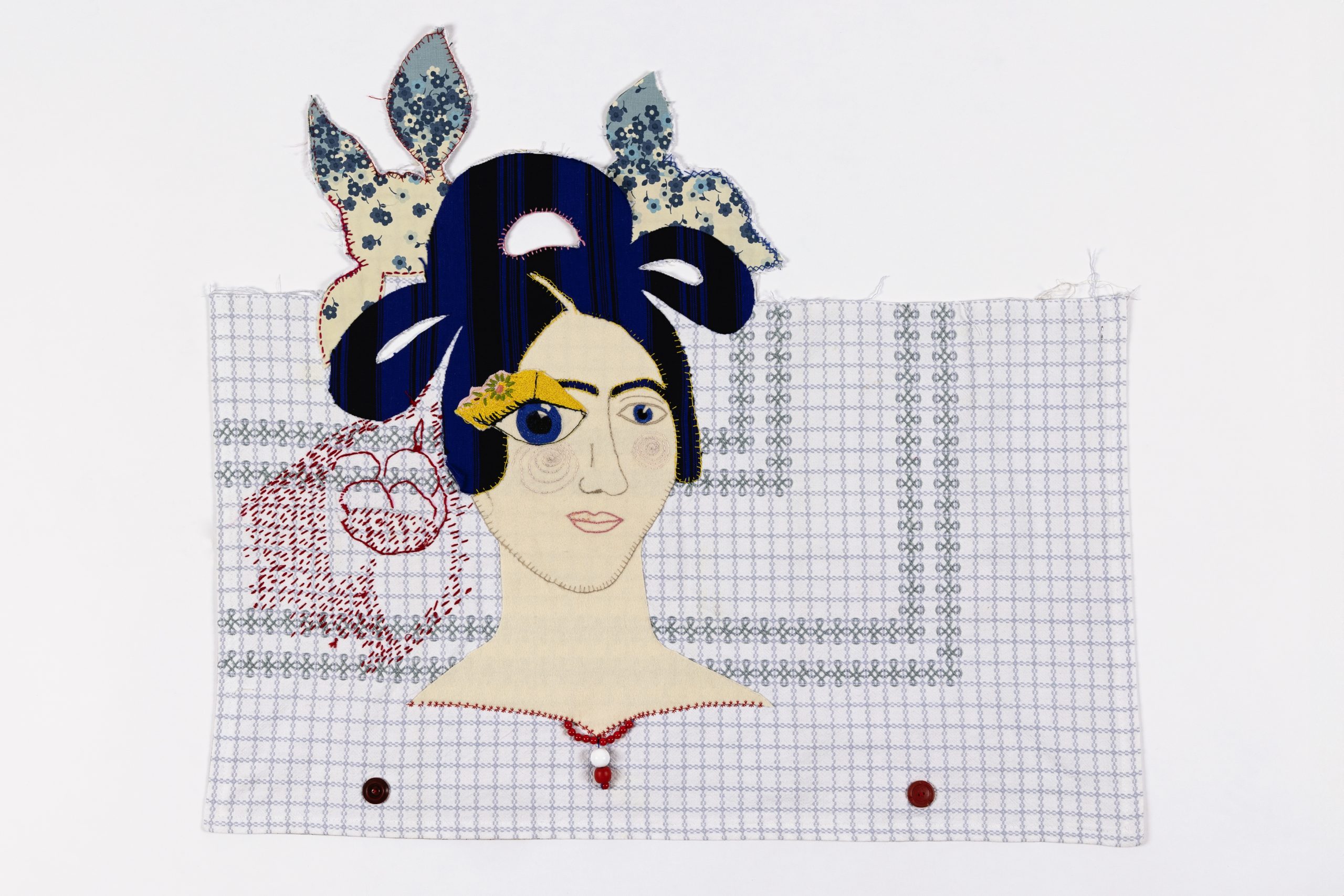The TextielMuseum already had 46 works by Hella Jongerius in its collection, but the most recent acquisition completes the story. With support from the Rembrandt Association, the museum purchased another 11 textile objects and prototypes and was gifted Jongerius’ complete textile design archive.
“Our aim at the TextielMuseum is to tell stories about our society through textiles,” says Nathanja van Dijk, Head of Museum Affairs. With the team of curators, she is responsible for acquiring new works that keep the collection current and the narratives diverse. Assembling what Van Dijk refers to as “the heritage of the future” involves not only purchasing pieces that are developed in the TextielLab but also acquiring works created elsewhere.
Recent examples include Otobong Nkanga’s tapestry ‘Tied to the Other Side’, Sheila Hicks’ installation ‘Snow White Sleeping’ and Mercedes Azpilicueta’s performance and related objects ‘The Captive’ and ‘Boîte à Couture’. With support from the Rembrandt Association and the Titus Fund, the museum has made another sensational acquisition: 11 of Hella Jongerius’ striking textile objects and prototypes. As the icing on the cake, Jongerius donated her complete textile design archive to the museum as well.

“It’s like having all of Rembrandt’s sketchbooks in one place”
Nathanja van Dijk, Head of Museum Affairs
Dutch master
“As a Dutch master of design, Jongerius has had a tremendous influence on how we view design, industry and craft,” says Van Dijk. “She was also a pioneer in promoting sustainability. Having a blueprint of all her textile objects in-house and being able to make them accessible here is immensely valuable for makers’ creative practice.” The acquisition and donation are not only remarkable in terms of their size and content, but they also make a statement about the importance of preserving design archives.
“The Netherlands doesn’t currently have a policy for this,” says Van Dijk. “Although a significant generation of Dutch designers are nearing retirement, financing the management of their archives is really challenging. At the same time, we don’t want all the hidden processes behind well-known works to be stored away in a dusty attic; they should be accessible in a relevant context, allowing other makers and interested parties to benefit from them.” This belief prompted the museum to join the Network of Archives for Design and Digital Culture’s (NADD) ‘Archives at Risk’ campaign. With this recent acquisition, which spans almost 30 years of design practice, the museum hopes to set an example and ensure that precious design memory is not lost.
160 boxes
The ‘Knitted Lamp’ for Droog Design from 1995, the ‘Polder Sofa’ for VITRA from 2003, the animal wall hangings for IKEA from 2009, the interiors of KLM’s aircraft from 2011, the redesign of the UN headquarters in New York from 2013 and the ‘Woven Windows’ from 2021 are just a few of Jongerius’ iconic works. All the steps leading up to the final design – at least the textile part of it – are contained in the 160 acquired boxes filled with samples, tests and prototypes. The boxes are still in the JongeriusLab in Arnhem but will soon be transferred to Tilburg. Just unpacking and organising them will be a monumental task, which curator Suzan Rüsseler will undertake in close collaboration with Jongerius, advisers and an internal team. All of these individual components will then be contextualised, culminating in a major retrospective exhibition in the museum in 2026. The exhibition will focus specifically on the development and production processes behind the final products and works of art, as these demonstrate how innovation is achieved.

Nathanja van Dijk looking at samples by Hella Jongerius in the TextielMuseum library. Photo: Patty van den Elshout
Open depot
“It’s like having all of Rembrandt’s sketchbooks in one place,” says Van Dijk. “As a maker or researcher, being able to browse through a collection like that is fantastic.” The TextielMuseum is currently working on a central Depot on Demand to make this idea a reality. Once this is up and running, visitors will be able to request workbooks, samples, prototypes and completed pieces from the depot. You can already submit requests for sample books and paper archive materials to librarian Jantiene van Elk, and for objects you can contact the head of collections. However, the depots are currently spread across different locations, making it difficult to access every item and causing delays in availability. The future Depot on Demand will speed up this process. You will then be able to request hidden textile gems, including those by Hella Jongerius, to help take your project to the next level.

Hella Jongerius/ Jongeriuslab, Portrait, 2005: one of the unique prototypes, made for the Animal Portraits for IKEA’s PS collection, acquired with financial support from the Rembrandt Association/Titus Fund. Photo: Josefina Eikenaar